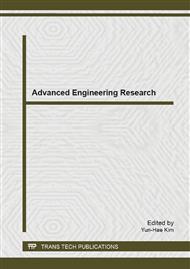p.1171
p.1175
p.1181
p.1189
p.1194
p.1202
p.1207
p.1211
p.1216
A Hybrid Approach for Stripe Noise Removal in Frequency Domain
Abstract:
Stripe noise always occurs in line-scan images which can seriously affect the image quality for future usage. To eliminate the stripe noise from the polluted line-scan images, a hybrid approach for stripe noise removal in frequency domain was presented. Firstly, the mathematical model of the stripe noise was established to describe its character. Secondly, the information of the stripe noise was separated from other information of the image by wavelet decomposition. Then, a band stop filter was designed for removing the stripe noise from the separated details band in spatial-frequency domain of Fourier. At last, the denoised image was obtained after wavelet reconstruction. The results indicate that the proposed approach can remove the stripe noise effectively from the polluted line-scan image while preserving as much details of the object in the image as possible.
Info:
Periodical:
Pages:
1194-1201
Citation:
Online since:
April 2014
Authors:
Price:
Сopyright:
© 2014 Trans Tech Publications Ltd. All Rights Reserved
Share:
Citation:


